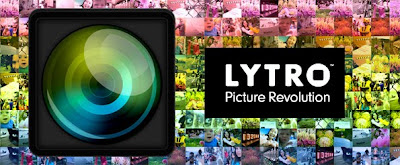
Start-up camera maker
Lytro promises that before the end of the year you will be taking pictures without worrying about focusing. This camera uses "light field capture" technology, which records various aspects of a light ray such as color, intensity, and direction. In other words, everything captured in the camera's view will be in focus, you will actually be able to go back to the picture later and pic the area you want to be in focus. No more Blurry Bigfoot!
You can see a demonstration in the video below.
Want to know how this works? Below is the science behind the camera.
The Science Inside
The team at Lytro is completing the job of a century’s worth of theory and exploration about light fields. Lytro’s engineers and scientists have taken light fields out of the lab – miniaturizing a roomful of cameras tethered to a supercomputer and making it fit in your pocket

Light Field Defined
What is the light field?
The light field is a core concept in imaging science, representing fundamentally more powerful data than in regular photographs. The light field fully defines how a scene appears. It is the amount of light traveling in every direction through every point in space – it’s all the light rays in a scene. Conventional cameras cannot record the light field.

Light Field Capture
How does a light field camera capture the light rays?
Recording light fields requires an innovative, entirely new kind of sensor called a light field sensor. The light field sensor captures the color, intensity and vector direction of the rays of light. This directional information is completely lost with traditional camera sensors, which simply add up all the light rays and record them as a single amount of light.
Light Field Processing
How do light field cameras make use of the additional information?
By substituting powerful software for many of the internal parts of regular cameras, light field processing introduces new capabilities that were never before possible. Sophisticated algorithms use the full light field to unleash new ways to make and view pictures.
Relying on software rather than components can improve performance, from increased speed of picture taking to the potential for capturing better pictures in low light. It also creates new opportunities to innovate on camera lenses, controls and design.

Picture Capabilities
How are light field pictures different?
The way we communicate visually is evolving rapidly, and people’s expectations are changing in lockstep. Light field cameras offer astonishing capabilities. They allow both the picture taker and the viewer to focus pictures after they’re snapped, shift their perspective of the scene, and even switch seamlessly between 2D and 3D views. With these amazing capabilities, pictures become immersive, interactive visual stories that were never before possible – they become living pictures.
Take a Deeper Dive
Want to learn more? Check out the Lytro Blog. Want to learn a lot more? Read our CEO’s dissertation.









